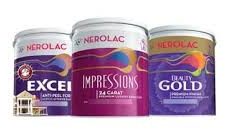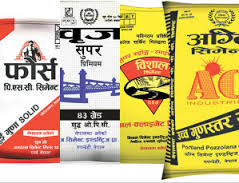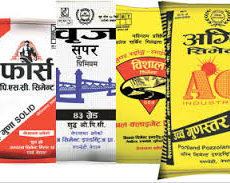Heavy equipments rental cost
0Approx heavy equipments rental cost is Rs 2200/per hour and Rs 1500 per day drivers cost.
check list of renting services

Approx heavy equipments rental cost is Rs 2200/per hour and Rs 1500 per day drivers cost.
check list of renting services


 Construction and development works today needs to be sustainable as well environment friendly and human friendly. The field of construction determines to what extent is construction human friendly as well as environment friendly. Taking this thing mainly into consideration, steel business federation had once organized a workshop seminar.
Construction and development works today needs to be sustainable as well environment friendly and human friendly. The field of construction determines to what extent is construction human friendly as well as environment friendly. Taking this thing mainly into consideration, steel business federation had once organized a workshop seminar.
Lead causes negative impacts in intellectual development of children and also impacts their respiration process. Lead exposure is responsible for death of 143000 children and intellectual disability of 6 million children per year. It causes severe health problems and especially impacts bones. Furthermore, excessive lead exposure causes menstrual problems and miscarriage in women and brings high blood pressure, impotency and kidney problems in men as per the joint program of Public Health and Environmental Promotion Centers and Kyurpak. In the program, issues regarding the harmful effects of paints containing leads beyond the acceptable limit were discussed.
62 countries in world has been successful to set and follow the parameter for paint, but Nepal still lags behind in seeking information regarding the matter. On Poush 7, 2071, Government had set the parameter for paint by publishing information in gazette. Despite Nepal Government has set the parameter for paint, the parameter is not successfully implemented yet. If the parameters are not effectively implemented soon, then Nepal has to face severe damage to workers, consumers and environment.
There is no negative impact of using lead free paint on investment and profit in paint business. People involved in paint business should know that the cost of using lead free paint is lower than the cost of environmental damage. So, it’s important that all stakeholders get committed to an objective of using lead-free paints.

Customers are still unknown about the right products,right brand,right suppliersn& right repairers, so due to lack of technicals knowledge about the products ,they are still cheated in every steps of purchasing ,nepalconstructions is trying its best efforts to convey your valuable complain/ appreciation messages about the producte & services.Any customers & viewers are requested to send their complain about construction & related products & services to us. just filing the complain firm,it will be noticed by public,THANKS
Complain no 1.for water pumps

My name is Ramesh Tiwari,from Kathmandu,I purchased export quality chinese summersible water pumps from Everest Machinery & parts Lampati ,Kalanki for install in my newly built well,costing Rs 5800.with one year warantee.But it was fully damaged within three month,& complain to suppliers ,he didnot care for me,& I went repairs in next place,they cost me Rs 3000/ for repair .so ,I requested to buy from best suppliers only. Be careful from such a suppliers .THANKS


house /land on Rent/on sale
contact directly for details
 Cement Information
Cement Information
उपभोक्ताले सिमेन्ट किन्दा सबैभन्दा पहिले उत्पादन मिति थाहा पाउन यसको ब्याच नम्बर हेर्नुपर्छ। कम्पनीले उत्पादन गर्दा बोरामा वर्षमा ५२ हप्ताअनुसार ५२ वटा ब्याच नम्बर राखेको हुन्छ। २०७३ वैशाख १ गतेखि ७ गते सम्मको समयमा उत्पादित सिमेन्टमा २०७३/१ लेखिएको हुन्छ। त्यस्तै यदि बोरामा २०७२/५२ लेखिएको छ भने त्यो सिमेन्ट २०७२ चैतको अन्तिम हप्तामा उत्पादित हो भन्ने बुझ्नुपर्छ।
कुनै पनि भौतिक संरचना निर्माण गर्दा सिमेन्ट आवश्यक हुन्छ। यसको गुणस्तर र मात्राले संरचनाको बलियोपन निर्धारण गर्छ।
अन्य खाद्य सामग्री जस्तै सिमेन्ट पनि उत्पादन भएको निश्चित अवधिभित्र उपयोग गरी सक्नुपर्छ। यसको पनि मिति र प्रयोग गर्ने अवधि सकिन्छ। धेरैले यसको बारेमा ख्याल नराख्दा निर्माण गरिएका संरचनाहरु कमजोर हुने गरेको छ।
हाल नेपाली बजारमा स्वदेशी र विदेशी गरी झण्डै ३० भन्दा बढी कम्पनीले सिमेन्टको उत्पादन गरी रहेका छन्। यसरी उत्पादन गरिएका सिमेन्टहरु मध्ये धेरैमा दैनिक उपभोग्य गर्ने सामानमा जस्तो प्रत्यक्ष रुपमा उत्पादित र म्याद सकिने मिति लेखिएको हुँदैन। तर यसमा ध्यान दिएर खोजियो भने सो मिति थाहा पाउन सकिन्छ।
सिमेन्टको उत्पादन मिति र प्रयोग गरिसक्नुपर्ने अवधि कसरी थाहा पाउने?
कम्पनीले सिमेन्ट उत्पादनको समयमा बोरामा ब्याच नम्बर उल्लेख गर्छ। यही ब्याच नम्बरका आधारमा सिमेन्टको उत्पादन र प्रयोगका लागि अन्तिम मिति पत्ता लगाउन सकिने नापतौल तथा गुणस्तर विभागका निर्देशक विश्व बाबु पुडासैनीले बताए।
उपभोक्ताले सिमेन्ट किन्दा सबैभन्दा पहिले उत्पादन मिति थाहा पाउन यसको ब्याच नम्बर हेर्नुपर्छ। कम्पनीले उत्पादन गर्दा बोरामा वर्षमा ५२ हप्ताअनुसार ५२ वटा ब्याच नम्बर राखेको हुन्छ।
जस्तै २०७३ वैशाख १ गतेखि ७ गते सम्मको समयमा उत्पादित सिमेन्टमा २०७३/१ लेखिएको हुन्छ। त्यस्तै यदि बोरामा २०७२/५२ लेखिएको छ भने त्यो सिमेन्ट २०७२ चैतको अन्तिम हप्तामा उत्पादित हो भन्ने बुझ्नुपर्छ।
सिमेन्ट सही तरिकाले स्टोर गरेर राखिएको छ भने उत्पादित मितिको ६ महिनाभित्रमा प्रयोग गर्न सकिने गुणस्तर विभागले जनाएको छ। त्यस्तै, सिमेन्ट किन्दा ब्याचनम्बर हेरेर पछिल्लो समयमा उत्पादन गरिएको किन्नु राम्रो हुने पुडासैनीले बताए। जहिले पनि ब्याचनम्बर हेरेर मात्र सिमेन्ट किन्ने हो भने म्याद सकिएको सिमेन्ट लिनबाट जोगिन सकिन्छ। यसका लागि उपभोक्ता आफैं सचेत हुनुपर्छ।
त्यस्तै किन्ने बेलामा पसलले सिमेन्ट कसरी स्टोर गरेर राखेको छ भन्नेमा पनि ध्यान दिनुपर्ने विभागको सुझाव छ। यो कुराको सचेतना आवश्यक रहेको पुडासैनीले बताए। चिसो ठाउँमा राखिएको सिमेन्टमा ओस आउने र डल्ला पर्ने हुनसक्छ।
नेपाल गुणस्तर चिन्ह प्राप्त नेपाली सिमेन्ट सबैलाई विभागले ३३ ग्रेडको मान्यता प्राप्त प्रमाणपत्र दिएको छ। कम्पनीले पनि उत्पादन समयमा उक्त सिमेन्टमा गुणस्तर पुरा भए नभएको परीक्षण गर्नुपर्छ। यदि कम्पनीले तोकिएको मापदण्ड पुरा नगरेमा ईजाजतपत्र खारेज समेत गर्न सकिने विभागले जानकारी दिएको छ।
यसअघि विभागले २०७२ चैत महिनादेखि उत्पादित सबै सिमेन्टको बोरामा स्पष्ट रुपमा उत्पादन मिति र प्रयोग गर्नुपर्ने अन्तिम मिति राख्ने बताएपनि अहिलेसम्म यो लागू् गर्न सकेको छैन। विभागका महानिर्देशक पुडासैनीले प्राविधिक समस्याको कारणले चैत महिनादेखि लागू गर्न नसकेपनि अब आउने आर्थिक वर्ष देखि लागू गर्ने तयारी रहेको बताए।
Source : SETOPATI,2016
।
यसका लागि उपभोक्ता आफैं सचेत हुनुपर्छ
Source : setopati ,2016
Nawalparwasi :A Biggest Cement City

Cement factories are springing up in Nawalparasi due to favourable investment environment. The district alone houses 5 cement factories running on high capacities. Nepal has a total of 47 cement factories.
Palpa, which shares a border with Nawalparasi, contains the largest limestone mine in the country. This allows cement factories located in Nawalparasi close proximity with the mine, located only 30-35 kilometres away. The close proximity allows factories to get their primary raw material easily.
Additionally, Nawalparasi’s closesness with the Indian border makes importing of other raw materials easy.
“Nawalparasi is the perfect place for cement factories due to a litany of reasons,” said Bharat Thapa, president of Federation of Nepali Chamber of Commerce and Industry (FNCCI), “It is close to the Indian border, it is located in the central part of the country and although Palpa contains the limestone mine, factories cannot grow there due to physical adversities of the Hilly region, which ultimately sends all the lime to the closest factory place: Nawalparasi.”
Another strong factor in Nawalparasi attracting investors is the price of land, which is low compared to other areas like Rupandehi, Chitwan or Makwanpur. There is an abundance of cheap land outside of residential areas in Nawalparasi.
Major cement factories such as CG Cement, Sarvottan Cement, Palpa Cement receive endorsements from district locals as the factories are located far away from residential areas.
Furthermore, these factories use modern technology to reduce noise and air pollution, bolstering their support from locals.
Last year, Hongshi Shivam Cement of Nawalparasi produced six thousand tonnes of cement daily during winter. With further improvements to its infrastructure, the same factory is aiming to double its output within two years. According to the factory director, Dipak Jha, the factor was established with investments from Chinese and Nepali investors worth Rs36 billion.
Similarly, Hiranganj Cement is also planning to expand its capacity from 1,200 tonnes per day to 1,800 tonnes per day. CG Cement is looking to improve its capacity from 1,200 tonnes per day to 2,400 tonnes while Palpa Cement will soon output 2,000 tonnes of cement daily.
According to Thapa, foreign companies such as India’s Reliance, Nigeria’s Dangote and China’s Houchin Construction, have started buying land in Nawalparasi to build cement factories.
source : Kathmandu Post
Nepal: Annapurna Cements has started test production at its new plant in the Sunsari-Morang Industrial Corridor. The US$5.8m plant has a production capacity of 12000bags/day of Portland Pozzolana Cement (PPC), according to the Kathmandu Post. Commercial production at the site is expected to start by the end of June 2017. The plant will import raw materials from India and it plans to sell its products initially in Provinces One, Two and Three.
Nepal: Data from the Nepal Rastra Brank shows that the value of cement imports have doubled year-on-year to US$155m in the first 10 months of the current financial year from US$77m in the same period in 2015 – 2016. The surge in imports has coincided with a fall in the capacity utilisation rate of most cement plants to 60%, according to the Himalayan Times newspaper. The fall in local production has been blamed on difficulties importing clinker, coal and other raw materials. Reduced electricity supplies have also affected production. The Cement Manufacturers Association of Nepal hopes that, if these impediments are reduced, the country could become self reliant in clinker within two years.
Nepal: Hongshi Shivam Cement’s Sardi cement plant project in Nalwalparasi is likely to be delayed due to slow progress by the government in building a road to a nearby limestone quarry. The project was due to start production in May 2017 but the slow rate of investment by the Chinese firm’s state partner has caused this completion estimate to be revised, according to the Kathmandu Post. Other infrastructure requirements for the project that are slowing it down include a 40km road to the site and an electricity substation
Nepal: Arghakhanchi Cement has launched Arghakhanchi MP OPC Cement in new waterproof packaging. The cement producer says that the new packaging will protect the cement from moisture and prevent leakage of cement, according the Kathmandu Post. The new bags are also intended to ensure a standard weight for the product. The company plans to increase its production capacity from its plant at Mainahiya, Rupandehi to 60,000 bags/day from the end of 2017.
22 February 2017
Nepal: Jagdamba Cement said that it has rebranded its Jagdamba Ultra Premium OPC Cement product with new packaging and appointed Bhusal Dahal as its brand ambassador. The cement producer added in a statement that its products can now compete with any international product available in Nepal, according to the República newspaper. It added that it has received NS 49, ISO 9001:2008, ISO 9001:2015/ISO 14001:2015 certifications as well as letter of appreciation 2014 and 2015 in NS Quality Awards.
21 February 2017
Nepal: Data from the Trade and Export Promotion Centre (TEPC) has shown that the value of imports of clinker has increased by nearly six times year-on-year to US$84m in the first six months of the Nepalese fiscal year to mid-January 2017 from US$14m in the same period in the previous year. Dhurba Thapa, president of the local Cement Manufacturers Association, told the Kathmandu Post that the surge in clinker imports was due to a market correction following a ban on exports imposed by India in the previous year. He added that imports of clinker from India account for around 35 – 40% of Nepal’s total consumption.
09 January 2017
Nepal: Government plans to grade domestic brands of cement have been delayed due to administrative issues at the Nepal Bureau of Standards and Metrology (NBSM). The NBSM prepared a draft for the certification in the autumn of 2016 but it has failed to approve it internally before forwarding it to the Nepal Standard Council, according to the Himalayan Times. The delay has been blamed on the busy schedule of NBSM employees. Under the plan, cement produced by local companies will be certified under three quality categories: 33-grade, 43-grade and 53-grade cement.
Nepal: The value of clinker imported from India into Nepal has risen by 674% year-on-year to US$60.5m in the first four months of the local financial year that started on 16 July 2016 from US$7.8m from the same period in the previous year, according to the Trade and Export Promotion Centre. Dhruba Raj Thapa, president of Cement Manufacturers Association of Nepal, in comments to the Himalayan Times attributed the surge to a lack of raw materials, including limestone, which has forced producers to import clinker from India. He added that government restrictions on opening new mines have restricted the local industry’s ability to produce its own
Paints News
KATHMANDU, March 11: Asian Paints Nepal has started offering Apex Ultima Protek in Nepal. Issuing a statement, the company said the paint helps keep outer walls of houses attractive for years.
The Apex Ultima Protek has a Teflon surface-protector which makes the paint more hard and resilient. According to the company, the paint helps protect exterior surfaces even in unfavorable climate.
Asian Paints Nepal is asking people who want to know more about its new product to type
‘PRO’ and send it as an SMS to 36677.

KATHMANDU: Aero Bricks Company Pvt Ltd has started production of blocks based on Autoclaved Aerated Concrete (AAC), which can be used as an alternative to red bricks.
The block is cheaper and stronger in comparison with other available bricks in the market, as per the press statement. The shape of the block can be adjusted as per the demand
